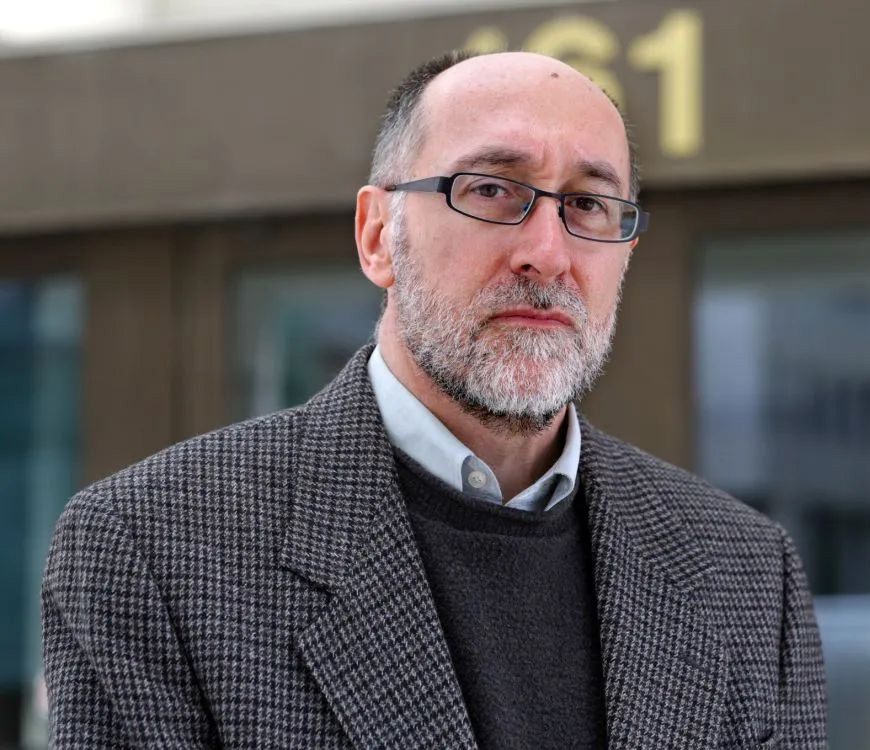 Curriculum Vitae - Denis Rancourt
Curriculum Vitae - Denis Rancourt
Denis G. Rancourt, PhD
Scientist. Social theorist.
Researcher at Ontario Civil Liberties Association (ocla.ca), since 2014
Chair-Director, Researcher at Correlation Research in the Public Interest (correlation-canada.org), since 2022
CV (long version), September 2024: https://archive.org/details/2024-09-cv-dr-denis-rancourt-v-10-health-incl-a-123
Denis Rancourt holds B.Sc.(1980), M.Sc (1981). and Ph.D. (1984, University of Toronto) university degrees in physics.
He has been a Natural Sciences and Engineering Research Council (NSERC) of Canada international post‑doctoral candidate in prestigious research laboratories in both France and The Netherlands (1984-85, 1985-86).
He became a national NSERC University Research Fellow, in Canada. He was a professor of physics at the University of Ottawa for 23 years, attaining the highest academic rank of tenured Full Professor. He developed new courses and taught over 2000 university students, at all levels, and in three different faculties (Science, Engineering, and Arts). He supervised more than 80 junior research terms or degrees at all levels from post-doctoral fellow to graduate students to NSERC undergraduate researchers. Several of his former graduate students are government and private‑sector scientists, university professors, teachers, managers, and business leaders.
He headed an internationally recognized interdisciplinary research laboratory, and attracted significant research funding for two decades.
Dr. Rancourt has been an invited plenary, keynote, or special session speaker at major scientific conferences more than 40 times, including recently (2020-). He has published over 100 research papers in leading peer-reviewed scientific journals, in the areas of physics, chemistry, geology, materials science, soil science, environmental science, and epidemiology.
He has made fundamental scientific discoveries in the areas of environmental science, measurement science, soil science, bio-geochemistry, theoretical physics, alloy physics, magnetism, and planetary science. His most recent peer-reviewed medical-journal articles are about theoretical epidemiology (see: https://correlation-canada.org/research/).
Dr. Rancourt’s scientific impact factors (h-index) is 41 (i-10 index = 88), and his articles have been cited more than 6,000 times in peer-reviewed scientific journals. ( See Google-Scholar profile: https://scholar.google.ca/citations?user=1ChsRsQAAAAJ).
Dr. Rancourt is a co-founding Director of (and presently a Research Associate with) the non-profit CORRELATION Research in the Public Interest (https://correlation-canada.org/).
Dr. Rancourt is a frequent media commentator. His medical, political and social theory articles and interviews are published in many venues. His recent video interviews and reporting videos about the science of the COVID-19 epidemic and the science of face masks for preventing viral respiratory diseases have been viewed more than 2 million times, in both French and English.
When I review scientific articles, in particular, in relation to COVID-19, my personal knowledge and ability to evaluate the facts in the said scientific articles are grounded in my education, research, training and experience, as follows:
- Regarding environmental nanoparticles. Viral respiratory diseases are transmitted by the smallest size-fraction of virion-laden aerosol particles, which are reactive environmental nanoparticles. Therefore, the chemical and physical stabilities and transport properties of these aerosol particles are the foundation of the dominant contagion mechanism through air. My extensive work on reactive environmental nanoparticles is internationally recognized, and includes: precipitation and growth, surface reactivity, agglomeration, surface charging, phase transformation, settling and sedimentation, and reactive dissolution. In addition, I have taught the relevant fluid dynamics (air is a compressible fluid), and gravitational settling at the university level, and I have done industrial-application research on the technology of filtration (face masks are filters).
- Regarding molecular science, molecular dynamics, and surface complexation. I am an expert in molecular structures, reactions, and dynamics, including molecular complexation to biotic and abiotic surfaces. These processes are the basis of viral attachment, antigen attachment, molecular replication, attachment to mask fibers, particle charging, loss and growth in aerosol particles, and all such phenomena involved in viral transmission and infection, and in protection measures. I taught quantum mechanics at the advanced university level for many years, which is the fundamental theory of atoms, molecules and substances; and in my published research I developed X-ray diffraction theory and methodology for characterizing small material particles.
- Regarding statistical analysis methods. Statistical analysis of scientific studies, including robust error propagation analysis and robust estimates of bias, sets the limit of what reliably can be inferred from any observational study, including randomized controlled trials in medicine, and including field measurements during epidemics. I am an expert in error analysis and statistical analysis of complex data, at the research level in many areas of science. Statistical analysis methods are the basis of medical research.
- Regarding mathematical modelling. Much of epidemiology is based on mathematical models of disease transmission and evolution in the population. I have research-level knowledge and experience with predictive and exploratory mathematical models and simulation methods. I have expert knowledge related to parameter uncertainties and parameter dependencies in such models. For example, my 2006 co-authored model of biogeochemical cycling of nutrients in lakes is highly cited (from my laboratory, lead researcher). I have recently made extensive simulations of epidemiological dynamics, using standard compartmental models and new models.
- Regarding measurement methods. In science there are five main categories of measurement methods: (1) spectroscopy (including nuclear, electronic and vibrational spectroscopies), (2) imaging (including optical and electron microscopies, and resonance imaging), (3) diffraction (including X-ray and neutron diffractions, used to elaborate molecular, defect and magnetic structures), (4) transport measurements (including reaction rates, energy transfers, and conductivities), and (5) physical property measurements (including specific density, thermal capacities, stress response, material fatigue…). I have taught these measurement methods in an interdisciplinary graduate course that I developed and gave to graduate (M.Sc. and Ph.D.) students of physics, biology, chemistry, geology, and engineering for many years. I have made fundamental discoveries and advances in areas of spectroscopy, diffraction, magnetometry, and microscopy, which have been published in leading scientific journals and presented at international conferences. I know measurement science, the basis of all sciences, at the highest level.
 Curriculum Vitae - Denis Rancourt
Curriculum Vitae - Denis Rancourt